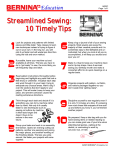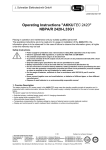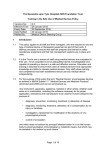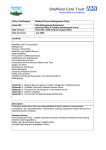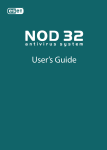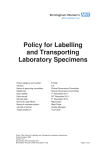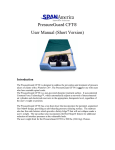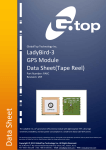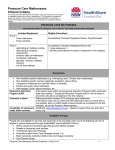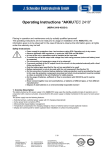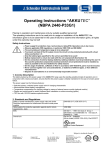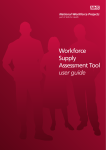Download The Use of the Patient Handling Risk Assessment Screening Form
Transcript
The Use of the Patient Handling Risk Assessment Screening Form Guidelines This document provides guidance to staff on the use of the Patient Handling Risk Assessment Screening Form Key Words: Patient, Handing, Risk, Assessment Screening Version: V1 Adopted by: Health and Safety Committee Date adopted: March 2013 Name of originator/author: Name of responsible committee: Date issued for publication: Review date: Sue Deakin, Moving and Handling Advisor Expiry date: N/a Health and Safety Committee March 2003 March 2013 Target audience: All staff Type of Policy Clinical (tick appropriate √ box) NHSLA Risk Management Standards if applicable: State Relevant CQC Standards: Non Clinical 4 CONTENTS . Introduction Page 1 Guidelines for using the Patient Handling Risk Assessment Screening Form Page 2 The Patient Handling Risk Assessment Screening Form Page 3 Guidelines for completing the Patient Handling Risk Assessment Form Page 4 Implementation Plan Page 8 Moving & Handling Service - January 2003 -7 INTRODUCTION The Moving and Handling Steering Group have reviewed the patient handling risk assessment process throughout the Trust. Listed below are reasons of the importance of patient handling risk assessments. The Need for Using the Patient Handling Risk Assessment Screening Form Statutory Obliqations The Manual Handling Operations Regulations, Regulation 4(1) (b) (i) states in the assessment of risk, each employer shall: 'Where it is not reasonably practical to avoid the need for his employees to undertake any manual handling operation at work which involve a risk of being injured Make suitable and sufficient assessment of all such manual handling operations to be undertaken by them' It is accepted that if a patient requires handling, as part of their care there will always be the risk of injury due to unpredictable behaviour of humans i.e. risk of falling. The Benefits of the Patient Handling Risk Assessments Screening Form The introduction of the Patient Handling Risk Assessment Screening Form will enable the following benefits:. A consistent approach to patient handling risk assessments. . A consistent approach to ways in which the patients are handled. . An excellent communication tool for all health care disciplines. The contents of the guidelines will provide the following: 1. Guidelines for using the patient handling risk assessment form. 2. Guidelines for completing the patient handling risk assessment form. 3. Implementation Plan for the introduction of the Patient Handling Risk Assessment Screening Form. 1 Moving & Handling Service - January 2003 GUIDELINES FOR PATIENT HANDLING RISK ASSESSMENT SCREENING FORM 1 This form is mainly for inpatient use. 2 If you are a staff member working in the community and a client requires moving and handling, a patient handling risk assessment will need to be completed to accompany the plan of care. 3 If the patient is independent in all areas, no further assessment is necessary unless any of the factors on the Patient Moving and Handling and Evacuation Screening Form change. 4 It is the responsibility of a trained nurse, a trained therapist or a social care manager to complete the moving and handling documentation. 5 Named Nurses / Home Managers are accountable for ensuring information is up to date and completed. 6 It is the responsibility of all members of staff to make themselves aware of a patient's moving and handling plan prior to any kind of moving or handling. 7 It is the responsibility of all members of staff e.g. health care support worker to inform a trained member of staff about any difficulties / concerns they may have after following a moving and handling plan 8 The decision of when to review the patient's / client's moving and handling needs will be made by the clinical staff in the department. . Moving & Handling Service - January 2003 , Leicestershire Partnership NHS NHS Trust PATIENT HANDLING RISK ASSESSMENT SCREENING FORM HOW TO USE THIS FORM If patient is independent in all areas, no further assessment is necessary, except if any of the below factors change. For specific action plan refer to care plan. WEIGHT………………………………………………. PATIENT DETAILS : ID NUMBER HEIGHT……………………………………………….. NAME……………………………………………….. DATE………………………………………………….. WARD / AREA……………………………………… HANDLING CONSTRAINTS YES NO HANDLING CONSTRAINTS ASSESSMENT OF PATIENTS CONDITION 5 AND 6 YES NO COMMENTS Mental State Challenging Behaviour Understands commands Difficulty with upper Limbs Difficulty with Lower Limbs Previous known handling issues Previous falls Pain Lines / Tubes Catheler Waterlow score / Tissue Viability – Assessment required. Assessor Review Date………………………………………………………… Signature…………………………………………………… Review Date………………………………………………………… ARE YOU GOING TO MANUALLY ASSIST THE PATIENT? IF YES – PROCEED WITH HANDLING FACTORS. CONSIDER – NO HANDLING SITUATION IS EVER TRULY RISK FREE. Moving & Handling Service - January 2003 MOVING AND HANDLING FACTORS Date Date Date WALKING (PLEASE TICK ) Date Date Date Independent Supervision Aid Required Unable to Mobilise Number of Handlers Signature BATHIING (PLEASE TICK) Independent Supervision Hoist Other Number of Handlers Signature EMERGENCY EVACUATION (PLEASE TICK) Independent Supervision Wheeled Transport Other Number of Handlers Signature TRANSFER BED TO CHAIR/COMMODE TO CHAIR/CHAIR TO TOILET/WHEELCHAIR (PLEASE TICK) Independent Supervision Aid required Other Number of Handlers Signature MOVING PATIENT UP THE BED AND POSITIONING IN BED (PLEASE TICK) Independent Supervision Aid Required Profiling Bed Other Number of Handlers Signature TRANSFER BED TO BED/TROLLEY (PLEASE TICK) Independent Supervision Aid Required Other Number of Handlers Signature 10 Take into account the environment, the task being completed and the individual (staff member) when completing this form. REFERENCES: THE GUIDE TO THE HANDLING OF PATIENTS (4TH EDITION) RCN I NATIONAL BACK PAIN ASSOCIATION (NBPA) SAFER HANDLING OF PEOPLE IN THE COMMUNITY - BACK CARE (1999) - NBPA - MIDDLESEX. PRESSURE ULCER RISK ASSESSMENT AND DEMENTIA RCN (2000) HUMAN APPLICATIONS IIOSU (1997) LONDON PLEASE REFER TO PROCEDURES FOR MOVING AND HANDLING OF PATIENTS. NOW DEVISE YOUR CARE PLAN. Moving & Handling Service - January 2003 GUIDELINES ON COMPLETING THE PATIENT HANDLING RISK ASSESSMENT SCREENING FORM 1 PATIENT DETAILS To include name and/or identification number The name of the location where the actual moving and handling manoeuvres will actually be completed. E.g. for community this may be their own home or a relative's home, this should be the place where the client's spends most of his/her time. 2 WEIGHT Record weight, and the date of when the weight was recorded as this may change (Thisinformation could be updated several times). 3 HEIGHT 4 5-6 DATE ASSESSMENT OF CLIENTS CONDITION Record height if known, it may be desirable to add details of the client's build This is the date for when form was completed Tick 'Yes' or 'No' box if applicable. Comments should include, information that may help the carer with handling moves / techniques. EXAMPLES BELOW OF SUGGESTED HANDLING CONSTRAINTS. (THIS IS NOT AN EXHAUSTIVE LIST - Well motivated - Unmotivated - Apprehensive - Disorientated - Suffers with dementia - Unpredictable Identifiable triggers What does the behaviour consist of? a. Mental state b. Challenging Behaviour c. Understanding Commands - What are the client's communication skills like? - Is English their first language? - May have visual or hearing defects / disabilities. - May respond to special signs. d. Difficulties with upper limbs - Unable to grasp with right or left hand. - Does not have full range of movement in one arm or both arms. - Unable to use right or left arm. Moving & Handling Service - January 2003 GUIDELINES ON COMPLETING THE PATIENT HANDLING RISK ASSESSMENT SCREENING FORM (Continued) e. Difficulties with lower limbs - Needs to wear shoes when standing. Right or left leg has a tendency to give way following five minutes of standing. – One leg shorter than other. – Unable to weight bear. f. Previous known handling issues - Has specialist equipment been required I hired I purchased? - Have staff had any difficulties g. Previous Falls h. Pain i. Lines/Tubes Catheter J. Waterlow Score Tissue Viability 7. SIGN NAME 8. REVIEW DATE Moving & Handling Service - January 2003 - Long history of falls. - Reason for previous falls I history of falls (if known). What may be causing pain? - Pain relief that may need to be given and when. - May have a leg bag. - May have colostomy. - May have an intravenous infusion I enteral feeding. Taken from Waterlow risk assessment. - (May give an indication of pressure area care required). - Please refer to tissue viability assessment. .. GUIDELINES ON COMPLETING THE PATIENT HANDLING RISK ASSESSMENT SCREENING FORM (Continued) 9 ENVIRONMENT AND INDIVIDUAL It is the duty of each EMPLOYEE to take reasonable care of their own health and safety and that of others, and to co-operate with the employers in discharging their duties under the act. Under the Health and Safety at Work Act (1974). Please inform your manager if you are unable to undertake a moving and handling task. , As the environment can constantly change staff members need to be aware of: - Space availability - Floor surface uneven, slippery or stable Variations in level of floors, work surfaces, or steps - Temperature, humidity or air movement - Lighting In line with the Moving and Handling Policy 2002 6.2.1, general risk assessments should be completed in your area so you have an idea of which patients can use which room. . For example, it can be said that with the hoist and space available it is not possible to toilet your mobile patients in the toilets and that these people must be toileted on commodes. Moving & Handling Service - January 2003 GUIDELINES ON COMPLETING THE PATIENT HANDLING RISK ASSESSMENT SCREENING FORM (Continued) 10 MOVING AND HANDLING FACTORS The date of filling out the factors. Tick the box under each heading that applies. Independent = Patient is able to do moves without help. Supervision = Patient may require slight assistance which could be instructions on how to move. Aid Required = Any equipment the ward has purchased and the staff need to use must be highlighted e.g. Frame Handling Belt Hoist Sliding Sheet Raised Toilet Seat Profiling Bed Transfer Board Stand Aid Number of Handlers = Number of staff required for moving and handling needs. Other = Other is a place in each section so any additional equipment that is not listed may be added e.g. under the "walking" heading other may staff protective head wear. Signature = Your signature. If any of the headings do not apply, please state 'not applicable' within the dated section. 7 Moving & Handling Service - January 2003 PATIENT HANDLING RISK ASSESSMENT SCREENING FORM IMPLEMENTATION PLAN DIRECTORATES LEAD PERSON Learning Disabilities Suggested implementation date April/May 2003 Michelle Churchard Practice Develop. Nurse Mental Health - Treatment Recovery Service Suggested implementation date April! May 2003 Kath Quinlivan Practice Development Nurse – ACTION Moving and Handling Risk Assessor will provide training sessions to M & H Field Trainers. The Field Trainers will pass this information onto staff during their local moving and handling training sessions. Social Care Managers and Team Leaders will also receive a package on how to use the form supplemented. The Risk Assessment Screening Form will be included as part of the admissions pathway process which: all staff have training on. Christine Gardner Ward Manager Information will be disseminated through the Nurse Practice Group. Staff will also be trained on how to use the form through the Senior Nurse Advisory Forum, this will be cascaded down. Mental Health - Specialist Service The Health and Safety On site training sessions will be Suggested implementation date: ~ Action Group offered to child and family psychiatry Mental Health Adult Suggested implementation date: April! May 2003 and eating disorders as they are April ! May 2003 inpatient areas that may be required to form patient handling. - Mental Health Older Persons Suggested implementation date April! May 2003 Julie Redman Clinical Nurse Leader Moving and Handling Risk Assessor will provide training sessions to M &: H Field Trainers. The Field Trainers will pass this information onto staff during their . local moving and handling training sessions. Posters will be distributed advertising the introduction of the "Patient Handling Risk Assessment Screening Form" with contact numbers for staff members who would like to access information on instruction of how to use the form. Moving and Handling update training offered by the Moving and Handling Service will also instruct staff on use of the form. Moving and Handling group will monitor the use of the form on an annual basis. 8 Moving & Handling Service - January 2003











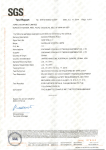
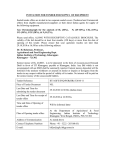
![[U4.92.11] Procédure ENGENDRE_TEST](http://vs1.manualzilla.com/store/data/006367543_1-7a8bc9bbf5b71ba531fd386dd19da1a3-150x150.png)
